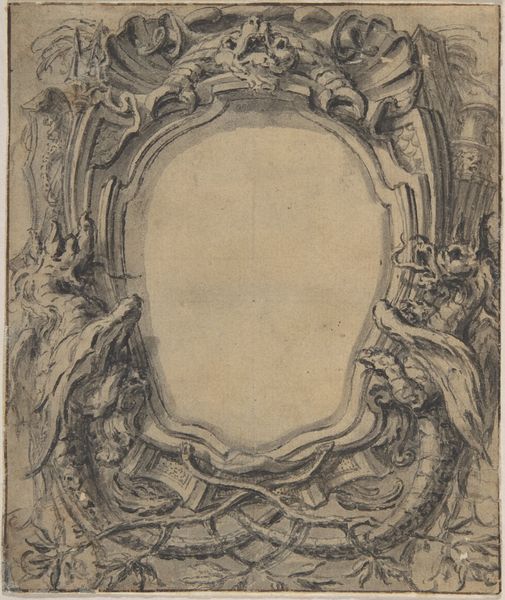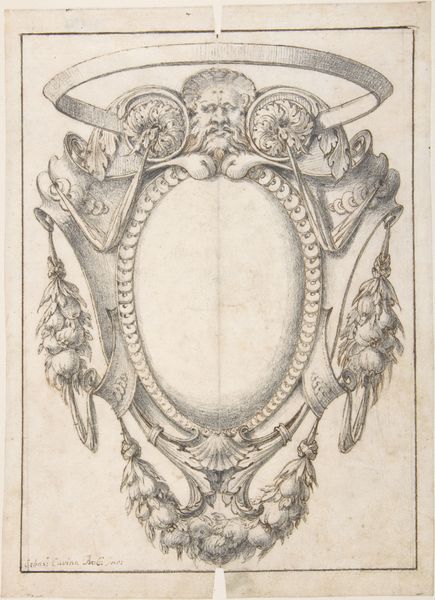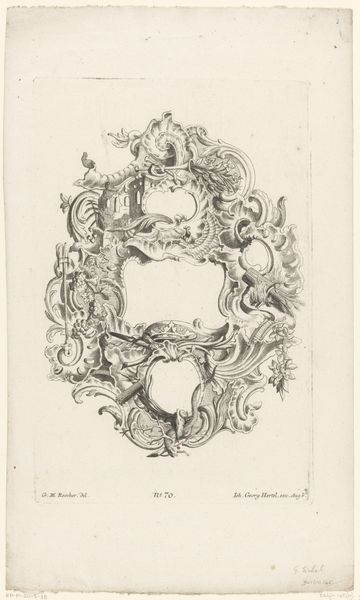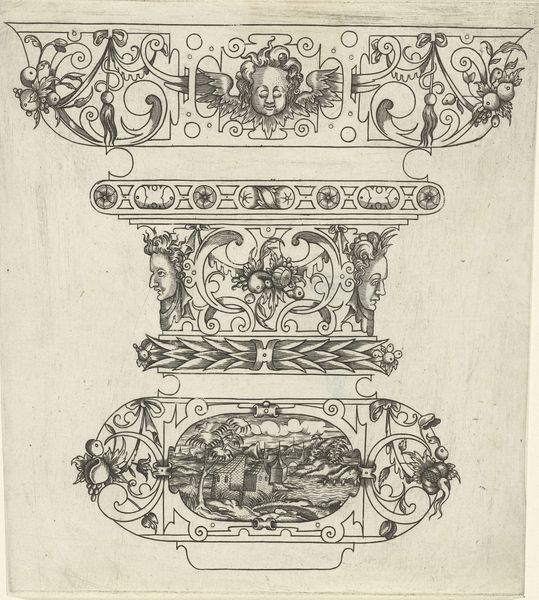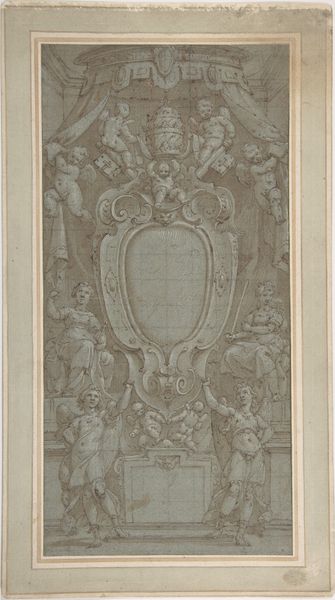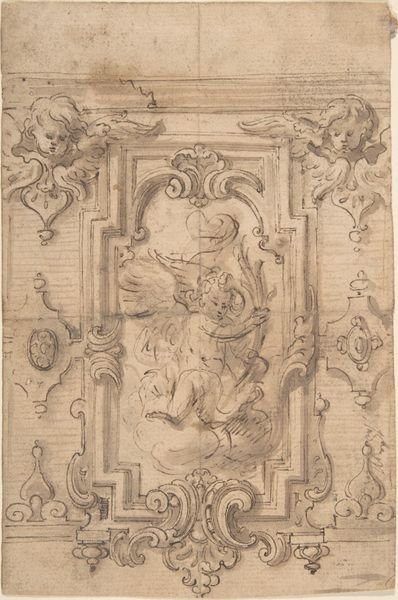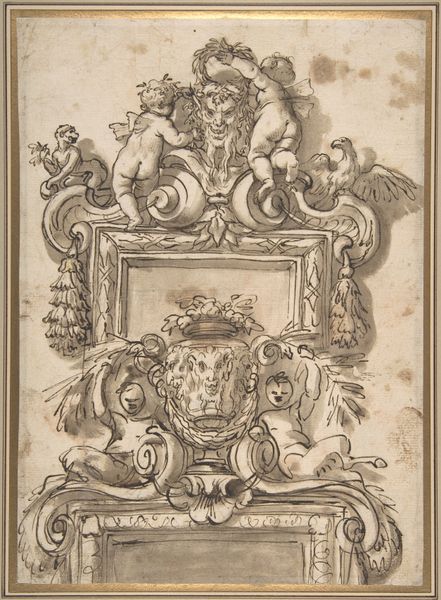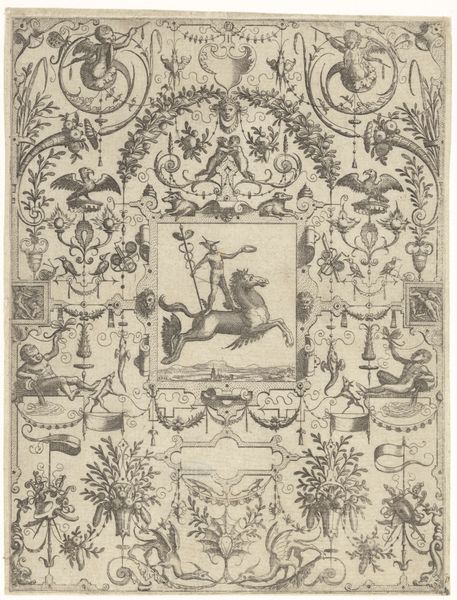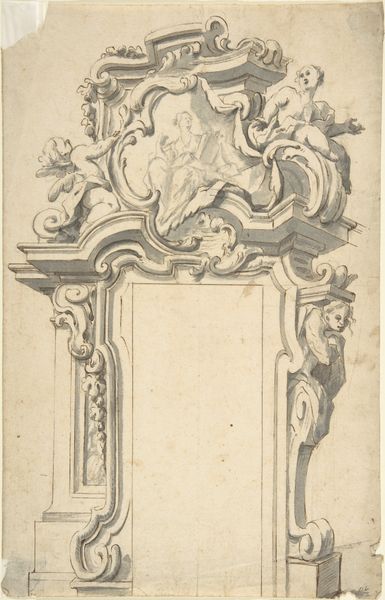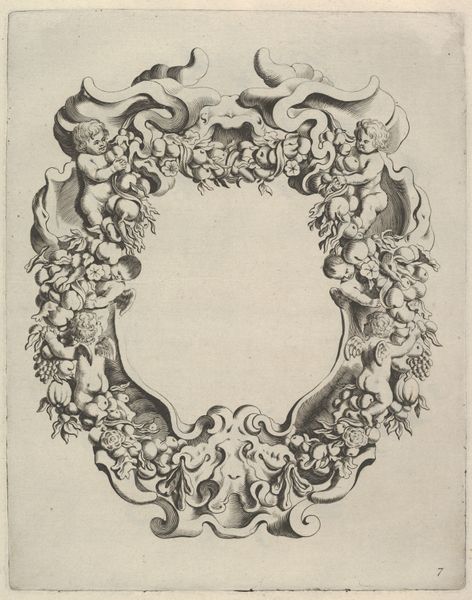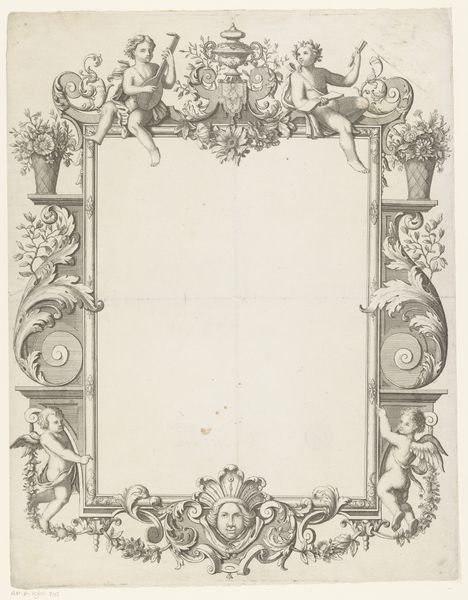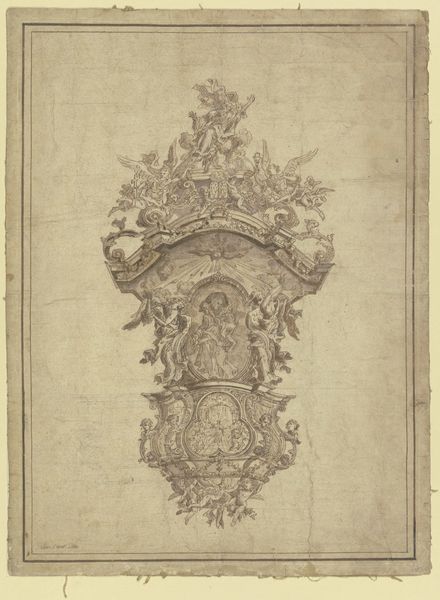
drawing, print, ink, pencil
#
drawing
#
allegory
#
baroque
# print
#
form
#
ink
#
pencil
Dimensions: 5 x 4 1/4 in. (12.7 x 10.8 cm)
Copyright: Public Domain
Curator: Welcome. Before us is Gilles-Marie Oppenord’s "Study for a Cartouche," created sometime between 1672 and 1742. It’s rendered in pencil and ink. Editor: My immediate impression is one of grand, Baroque drama. The lions flanking the empty cartouche are intensely powerful, the ornamentation over the top. Curator: Yes, those lions evoke a sense of heraldic power, don't they? Cartouches were, of course, spaces for displaying names or emblems. This blankness, however, invites contemplation. Editor: The symmetry is undeniably formal, with the cartouche as a framing device drawing our attention to that emptiness at the very center. But there’s asymmetry in the details – the energy of the pencil strokes, the positioning of the beasts…it’s almost unsettling. Curator: The asymmetry speaks to Baroque sensibilities as well; not merely surface-level order, but a dynamism striving to exceed its own structure. Think about the symbols. What do those lions suggest about status and dominance in that period? And what does it signify that there’s no name, no claim to power displayed? Editor: Perhaps it represents potential power or ambition, before it's solidified into something concrete? It also draws our eye to the textures, the layering, and the quality of light that Oppenord has achieved with monochrome inks and pencil. There is depth where there should not be any. Curator: Indeed, the piece feels like an emblem for absent authority, or perhaps the space of possibility before authority fills it. Look too at the supporting cast; winged cherubic figures seem to suggest something elevated, divine even, but that empty space raises further questions. Editor: What strikes me is the interplay of rigidity and fluidity. We have these solid forms, yet they're depicted with incredibly fluid, almost restless lines. It gives the impression that even stone and power are in constant flux. Curator: It does. The Baroque sought to convey a world of constant transformation, a dance between stability and volatility. Oppenord here captures this essence. Editor: It's fascinating how this ostensibly decorative piece can evoke such philosophical ponderings about power, representation, and the ephemeral nature of both. Curator: I agree. This piece reveals so much, formally, conceptually.
Comments
No comments
Be the first to comment and join the conversation on the ultimate creative platform.
